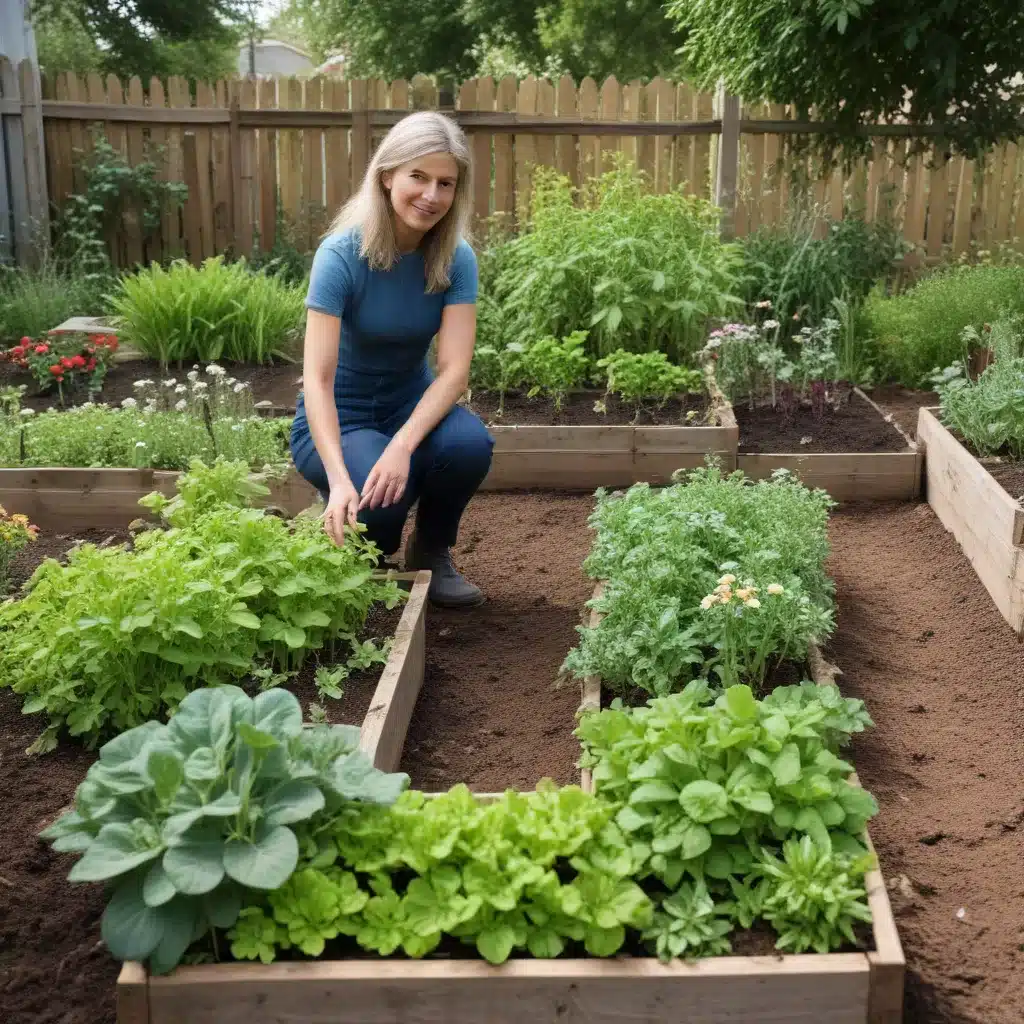
At Crooked Pines Farm, we believe that the key to a thriving future lies in our connection to the land. That’s why we’re passionate about teaching regenerative gardening practices – not just for the sake of growing beautiful produce, but for cultivating a deep respect and stewardship of the natural world. By instilling these principles in the next generation, we can empower young minds to become champions of sustainability and catalysts for positive change.
The Importance of Soil Health
The foundation of any productive garden is healthy, living soil. Conventional agriculture has often prioritized maximizing yields over nurturing the land, leading to the degradation of our most vital resource. But regenerative gardening flips this script, recognizing that the vitality of the soil is the true measure of a garden’s success.
Through practices like minimal tillage, cover cropping, and composting, we’re able to rebuild the intricate web of microorganisms, fungi, and nutrients that make soil truly alive. As this soil health is restored, we witness the remarkable resilience and fertility of the land, reducing the need for synthetic fertilizers or pesticides. It’s a win-win for both the garden and the environment.
Biodiversity and Ecosystem Balance
A hallmark of regenerative gardening is the emphasis on biodiversity. By planting a diverse array of crops, flowers, and native species, we create a thriving ecosystem where each component plays a vital role. Pollinator-friendly plants attract a symphony of bees, butterflies, and other beneficial insects, while companion planting strategies help manage pests naturally.
This approach not only produces a bountiful harvest, but also supports the delicate balance of the local environment. Children who explore these vibrant gardens learn firsthand the interconnectedness of all living things, fostering a deep appreciation for the natural world around them.
Sustainable Water Management
In an era of increasing water scarcity, regenerative gardening prioritizes responsible water stewardship. Through techniques like raised beds, mulching, and strategic irrigation, we minimize water usage while ensuring our plants thrive.
By observing and working in harmony with the land’s natural water cycles, we can create productive gardens that are resilient to drought and other climate challenges. This not only benefits the plants, but also helps to recharge groundwater supplies and maintain the health of local watersheds.
Regenerative Gardening Techniques
No-Till Cultivation
Tilling the soil may seem like a necessary task, but it can actually disrupt the delicate balance of the soil ecosystem. In a regenerative garden, we avoid turning over the earth, instead using no-till methods that preserve the intricate network of roots, fungi, and microorganisms. This helps to build soil structure, reduce erosion, and encourage the natural cycling of nutrients.
Composting and Organic Matter
One of the key pillars of regenerative gardening is the incorporation of organic matter into the soil. By composting plant debris, kitchen scraps, and other carbon-rich materials, we create a nutrient-dense amendment that nourishes the soil and supports the growth of beneficial microbes. This closed-loop system reduces waste while enriching the earth.
Companion Planting
Diversity is the name of the game in a regenerative garden. By strategically companion planting different crops, we can harness the natural synergies between plants. For example, planting marigolds alongside tomatoes can help deter pests, while nitrogen-fixing legumes like peas or beans can improve soil fertility for neighboring plants.
Designing a Regenerative Garden
Permaculture Principles
At the heart of regenerative gardening lies the principles of permaculture – a holistic design approach that mimics the patterns and relationships found in natural ecosystems. By applying these concepts, we can create gardens that are not only productive, but also self-sustaining and resilient.
Integrating Native Plants
Native plants are the backbone of a regenerative garden, as they are perfectly adapted to the local climate and ecosystem. By incorporating native species, we support local wildlife, reduce the need for irrigation and maintenance, and foster a deep connection between the garden and the surrounding environment.
Creating Wildlife Habitats
Regenerative gardening is not just about growing food – it’s also about providing wildlife habitats that support the entire web of life. By incorporating features like pollinator-friendly plants, brush piles, and water sources, we invite a diverse array of creatures to make their home in our gardens.
Educating the Next Generation
Hands-On Learning Opportunities
At Crooked Pines Farm, we believe that the best way to inspire the next generation is through hands-on learning. We invite young visitors to get their hands dirty, whether it’s planting seeds, composting food scraps, or observing the intricate dance of pollinators in the garden.
Connecting Youth to Nature
In a world increasingly dominated by technology, it’s crucial to foster a deep connection between children and the natural world. Our regenerative gardens provide the perfect canvas for exploration, discovery, and wonder, allowing young minds to reconnect with the rhythms and cycles of the earth.
Inspiring Sustainable Behaviors
By immersing children in the principles of regenerative gardening, we hope to inspire a lifelong commitment to sustainable living. From encouraging water conservation to cultivating an appreciation for local, seasonal foods, we’re planting the seeds of environmental stewardship that will blossom long into the future.
As we continue our journey of regenerative gardening at Crooked Pines Farm, we’re excited to share our lessons and insights with the next generation. By empowering young people to become active stewards of the land, we’re confident that we can create a more resilient, abundant, and harmonious future for all. Join us in this rewarding endeavor, and let’s grow a better world, one garden at a time.


